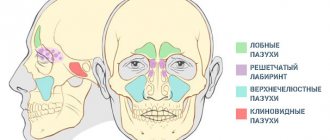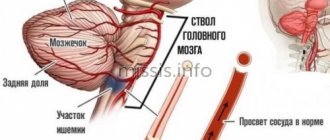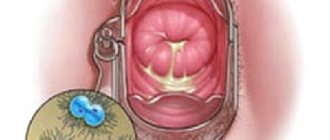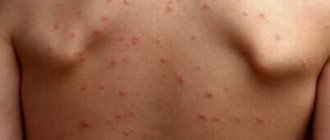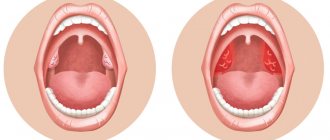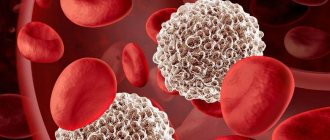A cluster of disorders affecting the neuropsychic sphere of a person and arising due to sudden or chronic mental trauma. In general, it is characterized by the absence of constructive changes in mental activity. In other words, this nervous disorder is a peculiar response of the body to stress, permanent experiences and internal conflict of the individual, which arise in the event of frustration, that is, a discrepancy between real possibilities and a person’s desires. Neurotic conditions are graded according to level and severity. They can be chronic or situational in nature. According to WHO, 400 million people experience some form of mental illness. Neuroses and neurotic conditions are considered the most common mental disorder.
Origin and causes
The name “neurosis” originated back in 1776 during a dispute between two doctors studying mental disorders. The Italian G. Morgagni specialized in pathological anatomy. He argued that neurasthenia is a consequence of physiological changes in organs and tissues. In his opinion, the pathology could be provoked by a protracted inflammatory process, tissue degeneration, or genetic characteristics. The Italian specialist’s opponent was the Scot W. Cullen. He considered the only possible cause to be the combined influence of neuropsychic factors. It was Cullen’s opinion that turned out to be correct, and the term he proposed was included in the official list of diagnoses.
In-depth study of the issue over many years has not yielded a comprehensive definition. Psychiatry and biology give different explanations for the deviation in question. Soviet scientist Ivan Petrovich Pavlov wrote that the essence of nervousness is a prolonged overstrain of nervous processes in the brain associated with destructive external stimuli. Sigmund Freud saw the reason in the opposition of the hidden instinct to social prohibitions. American psychologist Karen Horney blamed childhood trauma. Modern experts identify several prerequisites that provoke the disease.
Diagnostics
When diagnosing neurosis, it is important to identify the traumatic trigger. To do this, psychological testing of the patient is carried out. Then the structure of his personality is examined and a pathopsychological examination is performed. To exclude mental disorders, the patient is referred for consultation to a psychiatrist. During a neurological examination, no signs of focal symptoms are found in a patient with neurosis.
There is a general revival of reflexes and tremor of the fingers with arms extended forward. Then the neurologist prescribes additional diagnostics to exclude organic brain disorders (EEG, REG, MRI, vascular ultrasound). To exclude pathologies from the cardiovascular system, a consultation with a cardiologist is prescribed.
What is associated with the development of pathology?
Biological background
- Impaired synthesis of neurotransmitters. The activity of these substances affects the functioning of the nervous system and affects mood. Deficiency of mediators negatively affects well-being and causes depression.
- Intoxication. With prolonged negative effects of toxins, mental problems can be detected. Intoxication can occur due to the consumption of certain substances (medicines, alcohol, drugs), long-term illness, or poisoning.
- Complications of certain pathologies. It may be a consequence of other internal processes and abnormalities: a malignant or benign tumor, vitamin deficiency, damage to the nervous system of various etiologies.
Psychogenic causes
- Prolonged experience. Study stress, difficult work, excessive emotional overload, loss.
- Inability to confront problems. The catalyst for an obsessive state can be an insoluble situation (large debt, loss of position).
- Patient's personality bias. Impressiveness, regular feelings of anxiety, tendency to exaggerate and dramatize.
- Unsatisfied ambitions. Failure of events to meet expectations can be a big shock.
- Upbringing. Lack of normal relationships with parents, aggression, domestic violence.
However, it is often not possible to identify specific preconditions. In recent years, the total number of registered cases of HP has increased 25 times. The most common is obsessive-compulsive disorder. On average, severe pathology affecting the quality of life is found in every third inhabitant of the Earth.
Obsessive-compulsive disorders (OCD)
They are demonstrated by a feeling of fearfulness, intimidation, and anxiety. Obsessive thoughts haunt the patient against his wishes and will, although they are assessed by him as meaningless and harmful. There are syndromes of the following obsessive states:
- doubts – uncertainty about the correctness of actions taken or not taken, contrary to logical arguments. Such a person doubts whether he turned off electrical appliances, closed the door, whether the document was written correctly, etc., although he has repeatedly checked the action performed;
- Memories are annoying pictures of the past. Often a sad, unpleasant or shameful incident for the patient, and he tries not to think about it;
- imagination - the emergence of implausible images, perceived as real despite their absurdity. There may be a belief that the buried relative was alive, or other similar misconceptions. In this case, the patient imagines and painfully experiences the suffering of the “obviously dead” person in the grave or other unpleasant feelings;
- drive - a desire to carry out some extremely undesirable action, accompanied by horror and panic due to the impossibility of freeing oneself from such a desire. For example, it covers the desire to harm a loved one, throw yourself under a train, a car, or push someone under it. At the same time, an unbearable fear is experienced that this is happening (contrasting attraction);
- phobias (fears) - an unreasonable fear of heights, open or confined spaces, crowds of people, sudden death, etc. Sometimes they are accompanied by rituals - monotonous actions that have the meaning of spells and amulets. Such actions are performed with the aim of protecting against a certain misfortune, despite the critical attitude towards them. So, by walking around the arch, instead of passing under it, a person seems to be saving his relatives from harm; when starting something, he snaps his fingers twice or says the “cherished” word out loud - in order to avoid failure.
Some obsessive actions fill the patient’s thoughts until they are implemented, others pass and are forgotten. To keep himself from becoming obsessed, he needs to constantly monitor himself, which is extremely tiring for him.
Close to obsessional neurosis in clinical terms are psychasthenia and psychasthenic neurosis. They are characterized by:
- predominance of asthenia (enduring fatigue, weakness);
- constant general feeling of tension with heavy foreboding;
- conviction of personal social inadequacy, ugliness and inferiority relative to others;
- excessive impressionability due to criticism addressed to oneself;
- reluctance to make contact without a guarantee of being liked;
- avoidance of social or professional activities associated with significant social contacts due to fear of criticism, disapproval, or ignorance;
- limited life and social way of life due to the need for physical and psychological safety.
Differential diagnosis is necessary to distinguish obsessional neurosis from schizophrenia, cerebral atherosclerosis, and the consequences of encephalitis. The distinctive feature of neurosis, and at the initial stage the only psychopathological symptom, will be obsession. There are no intellectual disorders. If the disease takes a long course and is not sufficiently treatable, it can affect the patient’s personality and his future fate.
Signs of deviation in neurosis
Diagnosis involves a comprehensive assessment. Treatment of neurosis is prescribed after identifying the following fundamental signs that distinguish HP:
- The leading role of psychogenic deviation in the deterioration of well-being;
- Reversibility of deviations in the nervous system;
- The picture is not complemented by signs of psychosis (obvious mental disorders, phobias);
- The person does not have dementia, personality changes do not progress;
- The patient is aware of the pathological nature of thoughts and retains critical thinking.
As a rule, with neurosis, two types of symptoms are found: mental and physiological.
Physical symptoms and signs of neurasthenia
- Headache, constant dizziness and autonomic disorders. There is a feeling of squeezing, pulsation, tingling in the temples.
- Discomfort in the chest and heart area. Compression, pain, various rhythm disturbances - tachycardia, bradycardia.
- Pain in the stomach. It may hurt, pull or twist after the experience.
- Deterioration in performance and asthenic syndromes. Weakness, fatigue. Memory and thinking suffer. Chronic feeling of fatigue.
- Nervous pressure changes associated with attacks. It becomes dark in the eyes, I can’t breathe, my head is spinning.
- Loss of coordination. Noticeable external symptoms of neurosis are clumsiness and difficulties in the functioning of the vestibular apparatus.
- Psychalgia. Painful sensations not related to physiology, but caused by anxiety.
- Deterioration in the quality of sexual life. There is a decrease in sexual desire, tension negatively affects potency.
- Speech defects. Stuttering is common.
- Change in appetite. It manifests itself individually as gluttony and refusal of food.
What mental symptoms should be considered if a disorder is suspected:
- Insomnia and difficulty falling asleep;
- Emotional distress without adequate prerequisites;
- Panic attacks, acute reactions and grievances, fear;
- Difficulty making decisions, difficulties communicating, inability to cope with stress;
- Inappropriate reactions to events - aggression or tears;
- Manifestations include incorrect self-esteem - overestimation or underestimation;
- Changes in mood, fatigue, memory loss, irritability are detected;
- ND may include dwelling on an unpleasant situation from the past;
- Inconsistency of life values, dependence of self-perception on temperature changes, loud sounds or bright light.
It is necessary to understand that symptoms do not necessarily include all of the listed events. A comprehensive assessment of manifestations followed by a diagnosis is rational.
Neurotic depression
Neurotic depression is typically characterized by a depressed state with some inhibition of psychomotor reactions and thinking. There are monotonous depressive memories, pessimistic views of the future, and fixation on the traumatic situation. There is a tendency to tearfulness, irritability, decreased appetite, sleep disturbance, sensitivity (excessive emotional sensitivity).
Neurotic depression does not reach the depth of psychosis, is reversible, and goes away when a traumatic situation is analyzed or under the influence of treatment.
Treatment methods for neurasthenia
The treatment tactics for neurosis are determined by the doctor depending on the severity of the pathology. In some cases, you can get rid of HP using psychotherapy alone. Properly selected psychologist activities are the fundamental technique for treating neurasthenia. The reversibility of neurosis and a positive reaction to mental influences allows you to quickly achieve healthy thinking. Based on the specifics of the methods, there are:
Pathogenic. Designed to fight the root cause. They help identify conflict, resolve internal contradictions, and mitigate childhood trauma, the consequences of which have become a pathology in adulthood. The most effective methods of therapy are: psychodynamic, systemic, cognitive, integrative.
Symptomatic. They allow you to correct behavior during stressful situations, help lay down the principles of objective perception, and independently stop panic symptoms. They use hypnotherapy, breathing techniques, and relaxing painting.
Sometimes the diagnosis requires medical intervention. Usually, drugs act as a “second fiddle” to achieve rapid physical and mental relief. These products should only be consumed under the supervision of a specialist. The drugs have a wide range of limitations and side effects.
Psychotherapy
In order to alleviate neurotic symptoms (by taking antidepressants), psychotherapy is carried out:
- Cognitive-behavioral therapy – formation in the patient of the correct reaction to the situation, strengthening his adequate assessment of his behavior in a traumatic situation, changing the way he responds to it;
- group psychotherapy – takes place for 1.5 hours daily or weekly, in the form of discussions. Topics are determined in advance; they relate to the biography, behavior of group members, and life situations. Group therapy has rules: strict confidentiality, sincerity of participants, experience “here and now,” specificity of topics. Groups can be closed - with a constant composition of participants, or open - someone comes, someone stops visiting;
- hypnotherapy - suggestion is carried out in a special state of the patient, hypnotic. The session includes 4 stages: hypnotization, therapeutic suggestion, therapeutic rest, dehypnotization;
- autogenic training;
- breathing exercises for relaxation and concentration;
- non-verbal methods of psychotherapy - music therapy, art therapy, dancing and pantomime.
The most effective treatment is a combination of antidepressant medication and cognitive behavioral therapy.
Types of drugs for relieving neurosis
- Tranquilizers. Means that reduce emotional anxiety and tension.
- Neuroleptics. Suppress psychomotor agitation, reduce the speed of the brain reaction without loss of consciousness.
- Sedatives. They calm down, relieve hysterical neurosis, and normalize the emotional background.
- Antidepressants. Increases the level of neurotransmitters. This is the main way to combat depression using pills.
When conducting therapy among adults and children, light therapy, long walks in the fresh air, and communication with loved ones are recommended. It is good if the patient is engaged in some activity with pleasure, for example, creativity or handicrafts.
Features of the course in men
Neurosis occurs differently in all people. In women, the hysterical variety is more often found. Characterized by unstable behavior, dramatization of situations, tears and screams. Symptoms when treating neurosis in men who require treatment are somewhat different. They are less likely to encounter a diagnosis, but more often progress the condition to its extreme stages. In representatives of the stronger sex, the diagnosis is often associated with overexertion and workaholism. Common features include:
- Aggression. Reactions to familiar things become acute. A man responds to everyday events with anger.
- Low self-esteem. A person does not believe in himself and is afraid to start a new business.
- Strong self-criticism. They place high and sometimes unattainable demands on themselves.
- Inability to adapt to the situation. Even a small failure unsettles a man with neurosis.
Of particular importance for representatives of the stronger sex is such a manifestation as decreased libido. Sexual life is becoming less and less attractive. In addition, there is a complete or partial absence of erection. This leads to the progression of a nervous disorder and forces one to completely withdraw into oneself. It is important that the male half of society has always been distinguished by hushing up its own problems. Hiding the facts and the lack of measures taken also provokes the development of HP in a man.
Hysteria
Hysterical neurosis (hysteria) is a rather complex disease; it is based on behavioral characteristics that depend on the increased suggestibility and emotionality of the individual. The risk group for hysteria includes women aged 20-40 years, although this disease also occurs in men. One of the behavioral features of patients with hysterical neurosis is their desire to be the center of attention of others, to evoke admiration, surprise, envy, etc. The increased emotionality of patients affects all assessments and judgments, as a result of which they become extremely unstable and changeable.
Progress and consequences of late treatment
The development of neurosis does not have a specific time frame. Progress depends on the root cause, current circumstances and the strength of character of the person himself. Experts distinguish three stages:
- Initial. A person reacts poorly to stressful situations. Feels irritated and angry for no reason. May complain to a specialist about sleep problems.
- Moderate (hypersthenic). Characteristic signs are associated with increased excitability. Overexcitation is observed, hysterics and attacks of anger are possible.
- Hyposthenic. Accompanied by loss of interest in life. The patient gets tired excessively and quickly, falls into apathy.
At the first manifestations of HP, it is urgent to conduct a full examination. Long-term non-intervention leads to difficulties in the family and at work, inadequate assessment of personality, and the development of concomitant chronic diseases (disorders of the heart rhythm and the muscle itself, gastrointestinal pathologies, vascular disorders). If a person does not treat neurosis for more than 6-24 months, he may encounter a neurotic personality change. In this case, the condition will be irreversible. Outbursts of anger will increase, self-control will decrease to a minimum, and obsessive-compulsive syndrome may appear.
Drug therapy
The course of neurosis is associated with a simultaneous decrease in the level of brain serotonin, therefore long-term use of antidepressants - selective serotonin reuptake inhibitors - is prescribed for treatment. At the initial stage of treatment with antidepressants, their adverse reactions may occur, and the patient’s condition may worsen. In view of this, it is important not to stop taking the prescribed treatment, but only to reduce the dose of the drugs. Then, as tolerance improves, the dosage is gradually increased to the recommended values. Over time, the symptoms of neurosis decrease and the patient's condition improves.
Important: the antidepressant must be selected by a doctor! The selection takes into account the individual tolerability of the drug and its effectiveness for specific neurotic symptoms.
For the treatment of neuroses accompanied by insomnia or poor sleep, sedative and hypnotic antidepressants are prescribed. Sometimes, with great caution and in small doses, in short courses (to avoid addiction), tranquilizers are prescribed. When treating neuroses with concomitant weakness, memory loss, and asthenia, nootropic drugs are used. The duration of treatment is usually several months; if necessary, the course must be repeated.
Treatment in hospital
A pronounced positive effect comes from conducting therapy in the clinic. All conditions for a comfortable stay have been created here. Surveillance is carried out around the clock. The inpatient treatment program includes:
- Carrying out diagnostics. Basic techniques will allow you to identify chronic pathologies that can cause neurosis.
- Sessions of general and individual psychotherapy. The result of treatment largely depends on the work of the psychologist.
- Monitoring the intake of pharmacological agents. At home, it is not always possible to comply with the regimen and dosage of medications.
- Related techniques to normalize the condition. Listening to music, drawing, reading literature can have a beneficial effect on the patient.
It is important that the patient will be cut off from pathogenic society: intensive work, conflicts at home and domestic quarrels. This will also have a beneficial effect on the healing process. Affordable prices and guaranteed results make hospital treatment a priority in getting rid of neurosis.
The harm of self-medication
Many people try to get treatment based on advice taken from a dubious website. Following such recommendations and taking measures on your own is extremely dangerous. The following situations may occur in response to improper treatment:
- Progression of neurosis;
- Development of a persistent irreversible disorder;
- The appearance of other chronic diseases;
- Suicidal thoughts;
- Drug poisoning;
- Problems in society;
- Damaged relationships with loved ones and colleagues.
Outpatient program and remission
In the absence of an aggravating factor, therapy can be carried out on an outpatient basis. Treatment includes identical points:
- Attending psychotherapeutic sessions in accordance with the approved schedule;
- Taking medications according to indications as needed;
- Treatment of the underlying provoking disease, if present;
- Searching for some kind of “outlet” in hobbies and creativity;
- Gradual return to society.
Neurosis is highly treatable, under the supervision of the attending physician, and quickly fades into the background. Relapses are observed in rare cases, but as part of psychotherapy, the patient is taught to independently cope with anxious thoughts and panic. If you follow all the recommendations, peace and joy will forever take away nervous tension.
Prevention
Primary and secondary prevention of HP plays an important role. Even after complete recovery, it is important to follow recommendations to prevent relapse. The prevention program involves actions such as:
- Maintaining a healthy lifestyle. A balanced diet, adherence to sleep and rest, and exercise are the main pillars of a healthy nervous system. Narcotic substances are strictly prohibited. You should not drink alcohol regularly or in large quantities. It is advisable to completely give up tobacco products.
- Prevention of traumatic effects. One of the main goals is to minimize stress, avoid conflicts, and maintain a favorable emotional atmosphere.
- Following the principles of proper education. You should not instill in children the idea of their exclusivity and superiority or, conversely, artificially diminish their successes and merits.
- Maintaining adequate lighting. A banal lack of light often leads to the appearance of the first signs of neurosis and depression. It is worth giving up thick curtains and using bright lighting in the evening. Light helps produce serotonin, a neurotransmitter that has a positive effect on mood.
- Timely detection and treatment of pathologies. It is important to be regularly examined and urgently stop disorders of the endocrine, nervous, cardiovascular and other systems. Advanced pathologies significantly increase the risk of nervous disorder.
